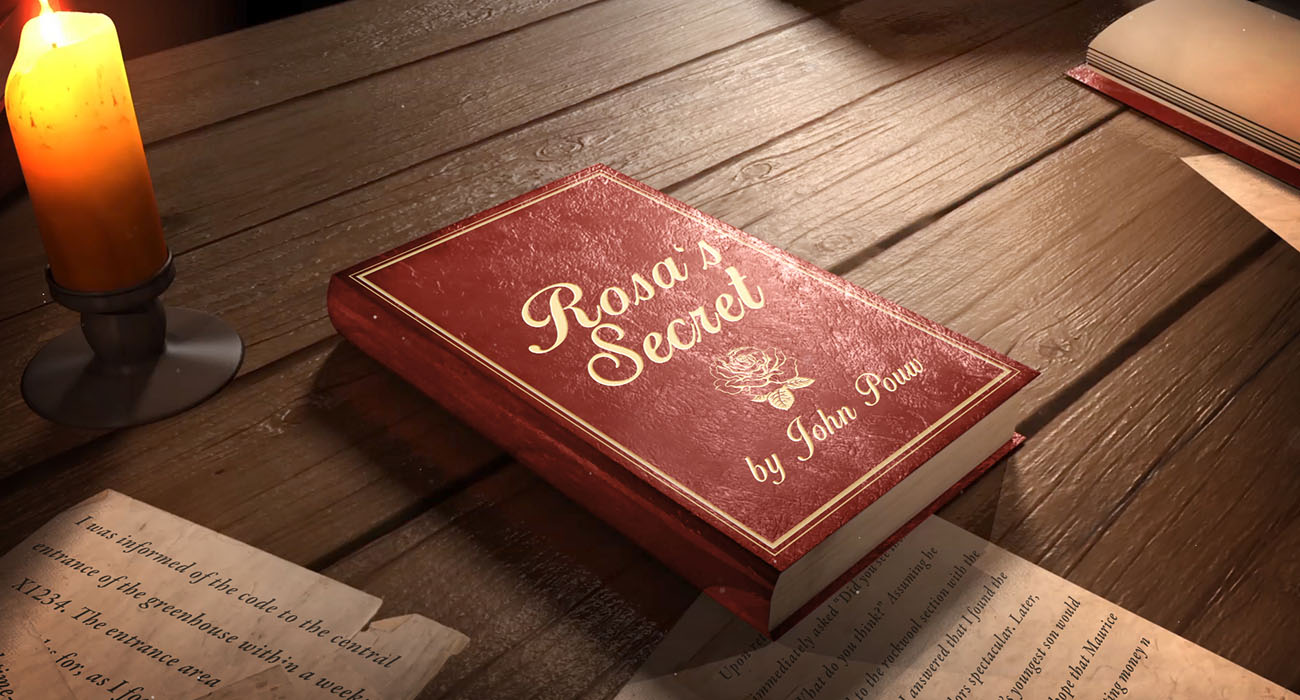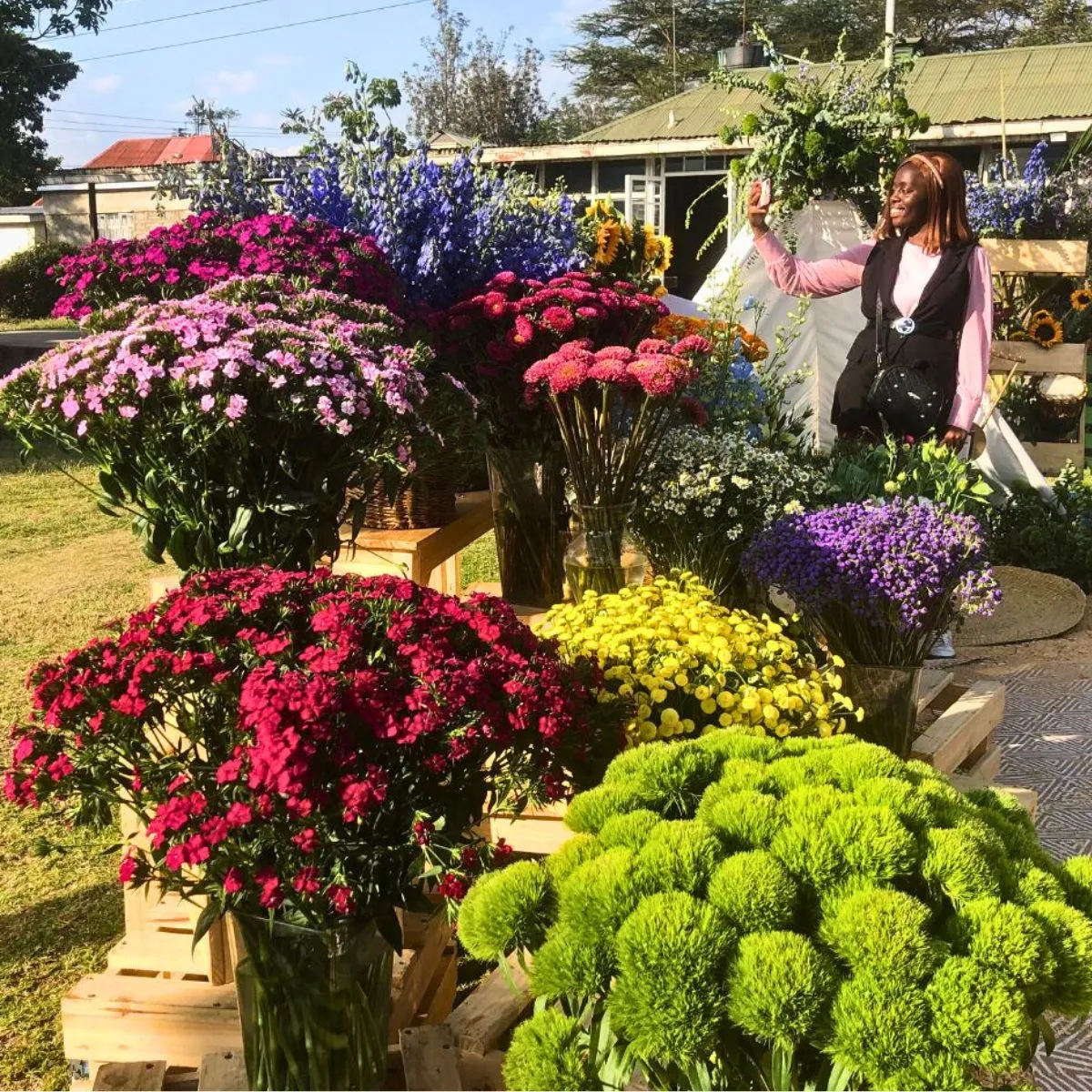Not too long after Father Dré’s return from his holidays we left for Denmark again. Big Anton and Sjef had been worried after our previous visit and wanted to know more about our apparent shrinking market share. I had been in touch with Jorgen Stach, but since his role was purely administrative at 25% of the royalties, he was of no help. At the yearly royalty turnover of 1 million guilders of the last few years, this was expensive bookkeeping.
A few days before, we made a quick visit to Witte de Wit’s agent for the U.K., Gareth Penn of Penn’s Nurseries in Knutsford, Cheshire. After disembarking my first-ever business class flight due to Dré’s back problems, Gareth picked us up from Manchester airport. After a tour of the garden-rose breeding, with some more miniatures that we would trial as pot roses in Holland, we learnt about the English market in Gareth’s modest office. Good market for garden roses in which Penn’s position was a steady fourth after Hawkins Roses, Chris Drake and, by far leading the pack, David Constable and his English Roses. Penn was selling less and less Witte de Wit garden varieties and Gareth wondered if the breeding attention was moving completely to indoor crops. “Maybe the new owner wants to renew this attention”, Dré answered. Somehow Gareth was already informed of the change of ownership. I must have missed this communication.
After a lovely Ploughman’s lunch and a visit to a garden center, Gareth dropped us off at the Tudor cottage of ‘George’, who appeared to be another of the Witte de Wit brothers, Gert, the jolly one, working for Penn. Communication mystery solved. During the cozy dinner with talkative Gert (who had to surrender his Dutch first name for pronunciation issues when moving to the U.K.) and his wife Annie I learned a lot about the Witte de Wit family history and that it was deflatine tablets that Dré was hiding in his breast pocket. Afterwards, Dré seemed very uneasy with Gert at the steering wheel driving us to the Cottons Hotel.
The next morning Gareth picked us up again to visit Pro-Culture, “a tissue culture laboratory where they propagate pot roses in meristem”, Gijs explained, leaving me curious to find out how on earth you could have plants grow without soil or rockwool, sunlight or lamps and A and B containers. Little pieces of plants were put in glass tubes and covered dishes, ‘meristems’ put into some jelly substance, forming roots and tiny leaves after some time. Comparing this to the ‘traditional’ way Anton’s Potrozen or Skjoldvang made their plants, Pro-Culture’s approach seemed very scientific rather than horticultural and very labor-intensive. Besides, they were still struggling with the product, but confident to succeed to multiply large quantities from limited material in a short period of time. Not too long before that I had learned that with cut roses it takes 6 months to make a plant (hence ‘half-year-old’ bushes) and that they were working on new techniques to make ‘grafts’ or ‘stents’ in 5-8 weeks, but that for pot roses each pot would give 3-4 cuttings every 4 weeks or so. Why even faster?
We flew back late that night, unpack and office the next day and pack the day after, en route to Denmark.
Father Dré and I were to make a longer Danish tour this time, to visit more pot rose growers. Sjef and Ward, production manager of Anton’s Potrozen, would join us a day later, after our stop at Rosen Vorbeck, owned and directed by Hans Schulz and meeting with Stach.
The two bags of coins had luckily shrunk and armed with a new road map, Mother Sien’s bag with thermos and crackers, we drove off. Well, Dré did, not allowing anybody at the steering wheel of his Volvo. Dré had given me the names and fax numbers of the Danes to visit in the Odense and Arhus areas: Svend Egede, Skjoldvang, Ove Nielsen and Gartneriet Jensen; and the hotels to book: Blommenslyst Kro/Motel Brasilia and Hotel Haderslev. I had faxed a copy of the map with the location of Motel Brasilia to Sjef.
Rosen Vorbeck was in the same area as Von Bismarck, and was similar in every possible way: in terms of space most attention went into the production and packing of garden bushes, gene stock in a separate greenhouse, seedlings were planted and selected in soil, there seemed to be no secrets and also here a boardroom full of prizes. Hans, the company administrator, had taken over Rosen Vorbeck from the grandson of the founder. When discussing international challenges, his prime concern was with cheating Dutch and Israeli propagators.
Jorgen Stach had done some homework. The drop in income was affecting his business and although the agent contract only described production control and royalty collection, Stach admitted he could have done more. It appeared that the Danes were moving away from the Rosaminis and Minimos and picking up cheaper mutations, as in the case of Skjoldvang and the Fanfare® varieties of the Danish breeder Von Scholten. This last turned Dré quiet and looking grumpy.
That night, during our punctual 6 p.m. dinner in Motel Brasilia, I asked Dré if he knew the Fanfares. He didn’t, but continued to explain that if it would have been varieties of Von Bismarck, Superplant, Groupe Ferry or any other breeder, it would have been an “up and down in breeding: down for Witte de Wit and up for another, which always happens over time.” “But everybody hates Mogens Bothildsen.” Dré realized that this was a new name to me. “Nils von Scholten,” Dré continued, “was one of the leading garden rose breeders and would always visit the trails in The Hague with his daughter Pernille. She then married Bothildsen, who took over the control of the business. He had big marketing ideas, no idea of breeding and soon created debts all over the place. Von Scholten went bankrupt seven years ago. This cost us 100,000 guilders in a time we were struggling to survive ourselves. It cost Von Bismarck even much more. Then he bought Von Scholten back, so he kept the breeding and the varieties and got rid of the debts. But the worst of it”, and now Dré’s face turned from hurt to anger, “he never, NEVER even apologized!” Luckily dessert was served to sweeten Dré up for his regular early night.
All this time, I had been watching the entry for Sjef and Ward to arrive. They arrived two hours later, not in the best of moods since first they had had two hours’ of ‘Stau’ at the Hamburg tunnel and then it turned out that the map that I had faxed them was outdated. Carlsberg came to the rescue, reviving their spirits and filling their empty stomachs while I briefed them about Rosen Vorbeck, the meeting with Jorgen Stach and the Fanfares. Sjef and Ward had seen the varieties at the Aalsmeer auction, produced by the Dutch pot rose grower Tonina. No wake-up call for them.
With Dré in command of the schedule, breakfast was at eight. “Dré, are you taking us on a holiday trip?”, Sjef wondered. Volvo in lead of BMW, I was writing down the directions from one producer to the next, since I would be on my own next time. It was ‘second left, 2 kilometers after leaving Sabro, right before the petrol station, then left at the ‘Fodder’ sign’, and long before Tom Tom was conceived. Today we would be in the Odense area, tomorrow east of Arhus.
Of course, our first stop was with Svend Egede in Bjert. Svend and his wife were in the farmhouse. Father Dré went in to say hello and find his half-half coffee recipe and Svend’s son Thom showed us around the greenhouses. There were all sorts of quality issues and Thom could not find the Witte de Wit trial varieties that had been there before Mother’s Day. We left when Dré reappeared from the farmhouse. He never said a word about his visit there.
Whereas Egede stuck to Witte de Wit’s Rosamini® and Minimo®, the next producer, Gartneriet Ove Nielsen was filled with only Fanfare® in a variety of colors. Nielsen apologized to Dré for the switch, but, showing us the impeccable plants with a minimum of 15 flowers, explained that “independent tests in a Norwegian research station had proven the amazing durability of two weeks and more in the consumer’s house”. Dré added that “Ove is the best producer you can find and, if there is a problem, he even sleeps in his greenhouse.”
When, the next day, we were at the young couple Camilla and Anders Jensen in their recently acquired Garneriet Camilla, Anders explained Von Scholten’s tactics: “Mogens Bothilden has been showing all buyers the results of the tests in Norway and then these buyers ask us for Fanfare®. But we can only grow the Fanfares on an exclusive basis, so no varieties from other breeders. We don’t like the aggressive approach of Mogens, but sooner or later we’ll have to make the change.” They still produced Witte de Wit and Von Bismarck varieties and on the spot I set myself the challenge to keep this couple out of Bothilden’s claws. Had they seen the new Witte de Wit’s that we had displayed after the dinner when Big Anton and I were introduced? Yes, they received plants from Svend Egede, who they both worked for and where they met. The plants didn’t have more than 7 to 10 flowers that only lasted for a week in the house. Not good enough.
The short visit to Skjoldvang was concluded by a round of Gammel Dansk, a tradition for new visitors, at the house of one of the two owners. The Volvo and BMW then parted ways, the former doing a steady 120 kph and stopping for dinner along the Autobahn, the latter doing 180 plus to get home a.s.a.p. Sjef and Ward ended up in the Hamburg traffic jam costing them 4 hours, whereas Dré and I were lucky with only 2 extra hours and a full stomach.








